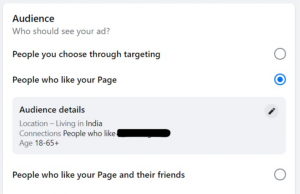
The other day I was on a Zoom call and, for the umpteenth time, I couldn’t hear what was going on. It’s not my aging ears that’s the problem, though. Instead, it is the fact that almost everyone on the call was speaking at the same time. So keen were they to make their point they were trying to shout over the other participants. It’s a growing problem in these “Zoom Days”.
The next afternoon I got rather frustrated with my son, Elliot. Every time I started to have a chat with him, he began commenting on what I was saying. He was so keen to get his point of view across he didn’t have the time to wait for the rest of what I was saying. That’s common among students these days I notice as well. And it should come as no surprise to me. The Gen-Z and Millennial populations have grown up having to fight for attention in a noisy online world. They are used to “having their say” on a wide range of social media outlets and have become accustomed to broadcasting their thoughts at every opportunity. The option of pausing and listening just doesn’t occur to people who have been brought up in the online world.
That’s a problem. Indeed, my university students know that I reckon the single most crucial skill in business is listening. You can’t deliver what customers want unless you genuinely listen to them. Similarly, you can’t design good jobs for your employees unless you hear what they are telling you. Plus, you can’t negotiate the best deals with suppliers unless you listen.
Now, there is some research to back up what I have been saying for years. In a study of the “Business to Business” sector, LinkedIn has found that the number one requirement of purchasers is that salespeople just listen. In many companies, sales training is all about talking, about delivering the right “patter” and focusing on the words to ensure you can “close the deal”. Yet the LinkedIn “State of Sales” report shows that you’ll probably close more sales if you shut your mouth and open your ears.
The problem for many salespeople – and others – is that these days we are all being encouraged to do more talking. We are using technology that demands that we speak – video, podcasts, conference calls and so on. Working at a distance due to social isolation doesn’t help. In an office-based meeting if it all fell silent as people thought about what was being discussed it wouldn’t be a problem. However, in online video calls, a few seconds of silence doesn’t “feel right”, and hence we jump in and speak – which we would not do when face-to-face. We can pause for longer gaps in the “real world”, but virtual meeting technology doesn’t like “dead air”, and so everyone starts speaking, rather than listening and thinking.
Many people don’t listen. Instead, they “hear”. They simply hear the words of another person, all the time looking for gaps where they can jump in to make the points they have been rehearsing silently in their head. When your brain is busy sorting out the words you want to say, it is not able to concentrate on the words that the other individual is saying. The only way you can listen is to have an empty head, ready to be filled with the words the other person is saying.
One way you can achieve this is to take notes. Write down by hand what the other person is saying. To accurately record what they are saying, you need to listen carefully to avoid mistakes. To be sure you are accurate, you could learn shorthand. Journalists have to listen actively and use “Teeline Shorthand” to help them record what is being said. You can learn the same system within a matter of a couple of weeks.
Another way you can be sure to listen, rather than just hear what is being said, is to playback what the speaker is saying silently in your head. You treat the situation as though you are a tape recorder. Each word goes into your brain and is immediately replayed back. This forces you to pay attention and listen to what is being said.
When you are using online communications systems, such as Zoom, make sure you look at the person speaking – rather than scanning the whole screen. Zoom allows you to change the layout to “speaker” view, which enlarges the speaker to take up most of the window, giving only miniature images of the other participants. This can help you concentrate on what is being said. Microsoft Teams has a similar option allowing you to “pin” this speaker’s image.
Of course, as you listen to what other people are saying, ideas will pop into your head. However, don’t use these to interrupt. Instead, make a quick note and then when it is your turn to speak, make the point or ask the question at that time.
Studies show that in conversations we only pay attention to around 25% of what is being said. If you are in an important business meeting or trying to understand the needs of a client, that is pitifully small. Only by paying attention and avoiding the urge to interrupt – especially in online communications systems – will you be able to understand more of what is being said.
The study by LinkedIn should be a reminder to us all that listening is the most important skill we possess. We just don’t use it well.
Digital & Social Articles on Business 2 Community
(46)








